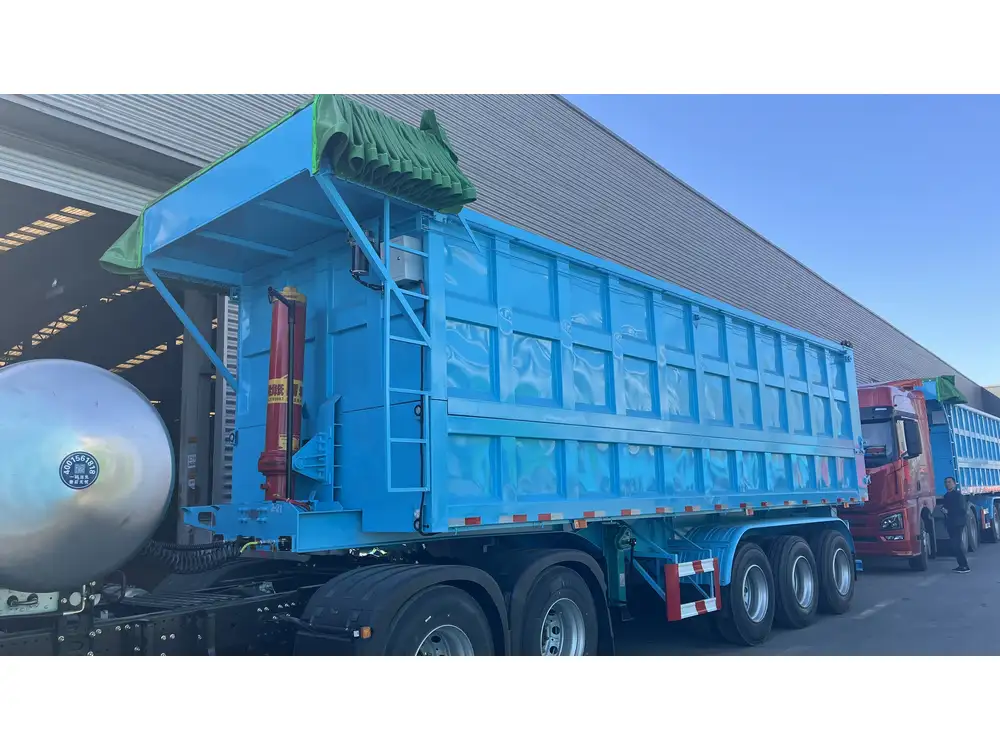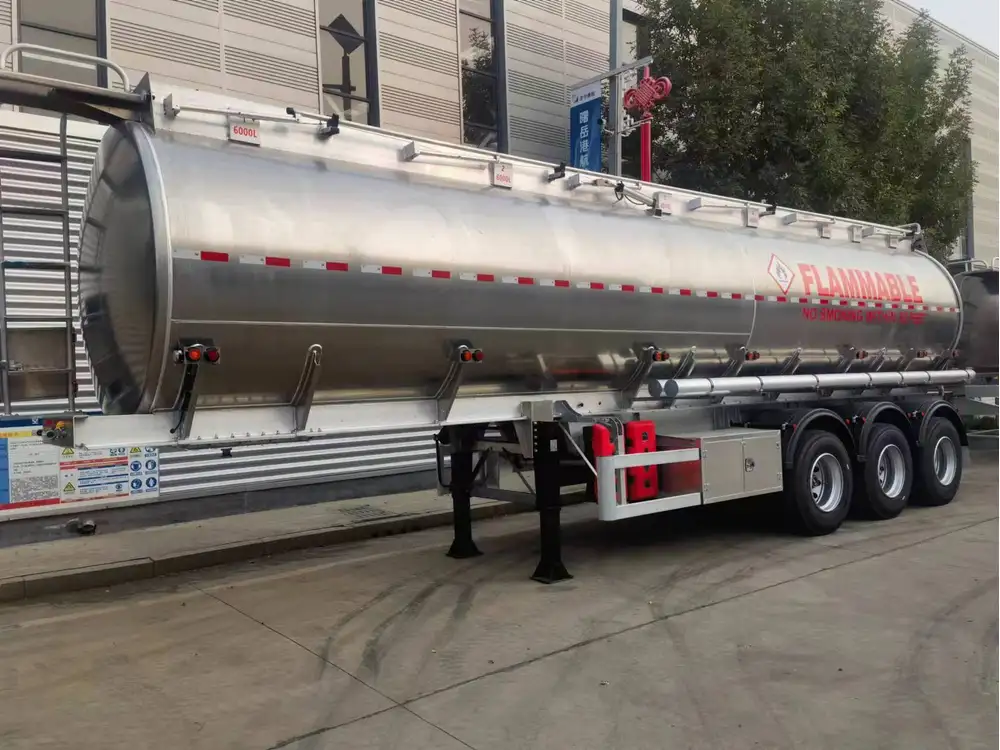When it comes to the logistics and transportation industry, the efficiency and performance of semi-trailers play a crucial role. One often-overlooked aspect that significantly affects operational costs and overall effectiveness is the gas tank size of these vehicles. This article aims to provide insights into the dimensions, capacities, and factors concerning semi-trailer gas tanks, ensuring users fully understand their implications.
In-Depth Look at Semi-Trailer Gas Tank Sizes
Standard Sizes and Capacities
The size of a semi-trailer gas tank is one of the pivotal elements to consider for fleet operators. The following table outlines standard capacities typically found in various semi-trailers:
| Fuel Tank Type | Typical Capacity | Comments |
|---|---|---|
| Standard Fuel Tank | 100-150 gallons | Most common size; sufficient for long hauls. |
| Large Capacity Tank | 150-300 gallons | Used for extended routes, reduces frequency of refueling. |
| Auxiliary Tanks | 50-100 gallons | Offers additional fuel, improving range and efficiency. |

Factors Affecting Fuel Tank Size
Several factors influence the appropriate size of a semi-trailer gas tank, including:
- Distance Traveled: Semi-trailers designed for long-haul routes require larger tanks to minimize fuel stops.
- Load Weight: Heavier loads may necessitate more fuel, thus prompting a larger tank size for consistent delivery times.
- Regulations and Compliance: Certain jurisdictions may impose regulations on tank sizes, requiring operators to adapt accordingly.
Comparison Between Standard and Large Capacity Tanks
To elucidate the practical differences between standard and large capacity tanks, consider the following points:
| Criterion | Standard Fuel Tank | Large Capacity Fuel Tank |
|---|---|---|
| Refueling Frequency | More frequent stops required | Fewer stops; increased efficiency |
| Weight Distribution | Lighter; may benefit urban logistics | Heavier; suited for long distance haulage |
| Cost Implication | Lower initial investment; higher operational costs | Higher upfront cost; potential savings on fuel economy |
Impacts of Fuel Tank Size on Operational Efficiency
Understanding the operational implications of the gas tank size is crucial for maximizing efficiency and cost-effectiveness. A larger fuel tank may initially seem cost-prohibitive, but it contributes to overall efficiency in several key ways:
- Reduced Downtime: Minimizing fuel stops allows drivers to maintain schedules, leading to increased productivity.
- Extended Range: Longer distances between refueling enhance route flexibility.
- Fuel Management: With a larger tank, operators can leverage bulk purchasing, often at reduced prices, leading to lower fuel costs per gallon.

The Cost-Benefit Analysis
Conducting a cost-benefit analysis before deciding on a fuel tank size can help manufacturers and fleet owners make informed decisions.
- Initial Investment: Larger tanks generally come with increased upfront costs, but they can lead to savings in long-term operational costs.
- Maintenance Considerations: Bigger tanks may require more vigilance concerning mold, fuel quality, and tank integrity. Manufacturers must consider the maintenance regimen and budget.
Safety Considerations for Semi-Trailer Gas Tanks
Ensuring the safety of fuel systems is paramount in the commercial trucking industry. There are several safety measures and standards that need to be followed:
- Tank Integrity: Regular inspections of the fuel tanks should be made to prevent leaks. The use of double-walled tanks can further enhance safety.
- Emergency Protocols: Drivers should be trained to handle emergencies involving fuel spills or fires.
- Compliance with Regulations: Understanding local, state, and federal fuel storage regulations is crucial to avoid legal complications.
Best Practices for Semi-Trailer Fuel Management
To optimize tank size and fuel usage, consider the following practices:
- Monitoring Fuel Levels: Advanced telemetry systems can provide real-time tracking of fuel levels, enabling proactive management.
- Route Planning: Use software solutions for efficient route mapping. Routes that overlap with convenient fuel stops can drastically affect fuel budget and scheduling.
- Regular Maintenance: Scheduled maintenance checks can prevent leaks and other potential hazards.

Choosing the Right Fuel Tank Size for Your Fleet
In considering the appropriate fuel tank size, evaluate your specific operational needs. Here’s a structured approach to make the decision:
- Analyze Operational Patterns: Identify the majority of routes your fleet traverses, evaluating the length and typical load weight.
- Calculate Fuel Requirements: Assess average fuel consumption based on historical data, factoring in varying load sizes and types of terrains.
- Consult with Industry Experts: Engaging with experienced manufacturers can provide tailored solutions that align with operational constraints.
Tips for Selecting the Ideal Size
- Test Various Configurations: If feasible, run pilot tests using different tank sizes to measure performance and operational efficiencies.
- Stay Updated with Regulations: Keep abreast of changing regulations that could impact tank selection and maintenance protocols.
- Consider Future Growth: If you anticipate expanding your fleet or operational area, it may be prudent to opt for larger tanks now.
Conclusion: The Intersection of Size and Efficiency
Investing time and resources into understanding the implications of semi-trailer gas tank sizes can lead to significant advantages in operational efficiency and cost savings. By analyzing factors such as distance, load weight, safety, and maintenance practices, fleet owners can make informed decisions that optimize their services.

Final Thoughts
As the logistics and transport landscape evolves, so too do the demands placed upon truck manufacturers and operators. Evolving technologies and regulatory developments may influence fuel tank designs and standards. Keeping an eye on industry innovations will aid in selecting the most appropriate tank sizes, ensuring fleets maintain productivity, safety, and profitability.
By approaching the complexity of fuel tank sizing with a structured and informed mindset, your fleet can navigate the road ahead with confidence, turning every mile into a profitable endeavor.



